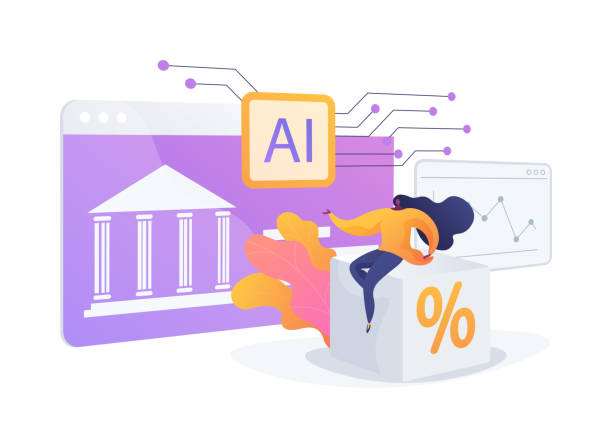In today’s dynamic financial landscape, lending institutions are continually seeking ways to tailor loan products to meet the individual needs of borrowers. One innovative approach gaining traction is the use of predictive analytics to craft personalized loan offers based on anticipated future income trends. This method promises to revolutionize how loans are structured, making them more adaptive and responsive to borrowers’ evolving financial situations. Here’s how predictive analytics is shaping the future of loan offers.
Table of Contents
ToggleUnderstanding Predictive Analytics
Predictive analytics involves using historical data and statistical algorithms to forecast future outcomes. By analyzing patterns and trends, lenders can make informed predictions about various factors, including borrower income, creditworthiness, and repayment capacity. Unlike traditional models that rely on static data, predictive analytics offers a forward-looking approach, providing insights into how a borrower’s financial situation might change over time.
How Future Income Trends Influence Loan Offers
- Enhanced PersonalizationTraditional loan offers often rely on past income and credit history, which may not accurately reflect a borrower’s future financial potential. Predictive analytics allows lenders to incorporate future income trends into their decision-making process. For example, if a borrower is projected to experience significant salary growth or career advancement, predictive models can adjust loan terms accordingly, offering more favorable conditions such as higher loan amounts or lower interest rates. This level of personalization helps borrowers secure loans that better align with their financial outlook and goals.
- Improved Risk AssessmentBy analyzing future income trends, predictive analytics provides a more comprehensive view of a borrower’s risk profile. Lenders can assess the likelihood of a borrower’s ability to meet future financial obligations based on projected earnings. This helps mitigate risks associated with lending, as the model considers potential fluctuations in income, economic conditions, and career trajectory. For instance, a borrower with a stable job and a clear path to career advancement may be deemed less risky than one with uncertain income prospects.
- Dynamic Loan StructuringPredictive analytics enables lenders to offer dynamic loan structures that adapt to changing income levels. For example, loan agreements could include flexible repayment options that adjust according to the borrower’s income growth. If a borrower’s income increases significantly, they could be offered the option to increase their loan payments or shorten the loan term without penalties. Conversely, if their income experiences a temporary dip, they might be granted temporary relief in the form of lower payments or extended terms. This flexibility ensures that loan terms remain manageable throughout the borrower’s financial journey.
Key Components of Predictive Analytics in Loan Offer Creation
- Data Collection and IntegrationThe foundation of predictive analytics is comprehensive and accurate data. Lenders gather data from various sources, including employment records, salary histories, educational background, and industry trends. Integrating this data with external economic indicators and market trends allows for a more accurate prediction of future income patterns. This holistic view helps in crafting loan offers that reflect both individual and broader economic factors.
- Advanced Algorithms and ModelsPredictive analytics relies on advanced algorithms and machine learning models to analyze data and generate forecasts. These models use statistical techniques to identify patterns and correlations, providing insights into future income trends. Algorithms are continuously refined based on new data, ensuring that predictions remain relevant and accurate. For example, machine learning models can learn from historical loan performance to improve their predictions about a borrower’s future income and repayment capacity.
- Scenario AnalysisScenario analysis involves evaluating different potential future scenarios to understand their impact on loan offers. Predictive models can simulate various income trajectories, economic conditions, and career developments to assess how these factors might affect loan terms. This helps lenders prepare for different scenarios and offer loans that are resilient to potential changes in the borrower’s financial situation.
Benefits of Predictive Analytics in Loan Offers
- Increased Borrower SatisfactionPersonalized loan offers based on future income trends can significantly enhance borrower satisfaction. When loans are tailored to align with a borrower’s anticipated financial situation, they are more likely to find terms that suit their needs and capabilities. This leads to higher approval rates and more successful loan experiences.
- Competitive AdvantageLenders that adopt predictive analytics gain a competitive edge by offering more customized and flexible loan products. This differentiation helps attract a broader range of borrowers and builds stronger customer relationships. In a competitive lending market, the ability to offer personalized terms based on future income trends can set lenders apart from their competitors.
- Reduced Default RatesBy considering future income trends, lenders can better assess a borrower’s ability to repay the loan, reducing the risk of defaults. Personalized loan offers that account for anticipated income growth or fluctuations help borrowers manage their repayments more effectively, leading to lower default rates and improved loan performance.
Challenges and Considerations
- Data PrivacyCollecting and analyzing personal financial data raises privacy concerns. Lenders must ensure that data is handled securely and that borrowers’ privacy is protected. Compliance with data protection regulations is essential to maintain trust and safeguard sensitive information.
- Accuracy of PredictionsPredictive models rely on historical data and assumptions about future trends. While these models are sophisticated, they are not infallible. Lenders must regularly update their models and validate predictions to ensure accuracy and reliability.
- Integration with Existing SystemsImplementing predictive analytics requires integrating new technologies with existing loan processing systems. This can be complex and may involve significant investment in technology and training.
Conclusion
Predictive analytics is revolutionizing the way lenders create personalized loan offers by incorporating future income trends into their decision-making processes. By enhancing personalization, improving risk assessment, and enabling dynamic loan structuring, predictive analytics helps borrowers secure loans that better align with their financial futures. While there are challenges to address, the benefits of increased borrower satisfaction, competitive advantage, and reduced default rates make predictive analytics a valuable tool in the modern lending landscape. As technology continues to advance, the role of predictive analytics in shaping personalized loan offers will undoubtedly expand, offering new opportunities for both lenders and borrowers.

